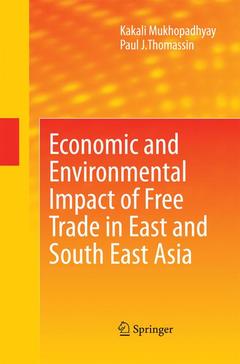Description
Economic and Environmental Impact of Free Trade in East and South East Asia, 2010
Language: English
Publication date: 09-2014
209 p. · 15.5x23.5 cm · Paperback
Publication date: 02-2010
209 p. · 15.5x23.5 cm · Hardback
Description
/li>Contents
/li>Comment
/li>
In recent years, the East and South East Asian region has witnessed a rapid expansion of regional economic cooperation through bilateral and plurilateral free trade agreements. The current book attempts to comprehensively analyze the economic and environmental impacts of regional economic integration in East and South East Asia to the year 2020. This region has some of the fastest growing economies of the world. A global economic model was used to undertake the analysis. A rare feature of the book is the detailed environmental implications of the Regional Trade Agreements focusing on air, water, and waste pollution. Economic integration among the East and South East Asian region has been an important agenda item for the academic and policy communities in recent years.
The study provides insight into pursuing a concrete multilateral trade liberalization policy (combining ASEAN and other countries in East Asia) and throws more light on the on-going trade and environment debate. This book will be a good addition to the field of trade and the environment. The academic community ? primarily researchers and policy makers, and world bodies, such as the WTO, ADB and the World Bank, will benefit from the book.
Concentrates on the fastest growing economies of the world
Focuses on the future of the world economy as well as promising ASEAN region to 2020
Makes a comprehensive analysis of economic and environmental impact of the regional economic integration
Unique compared to other books which are primarily a collection of articles
Deals with the most recent controversial issue - the concern of WTO, World Bank, academicians and policy makers




